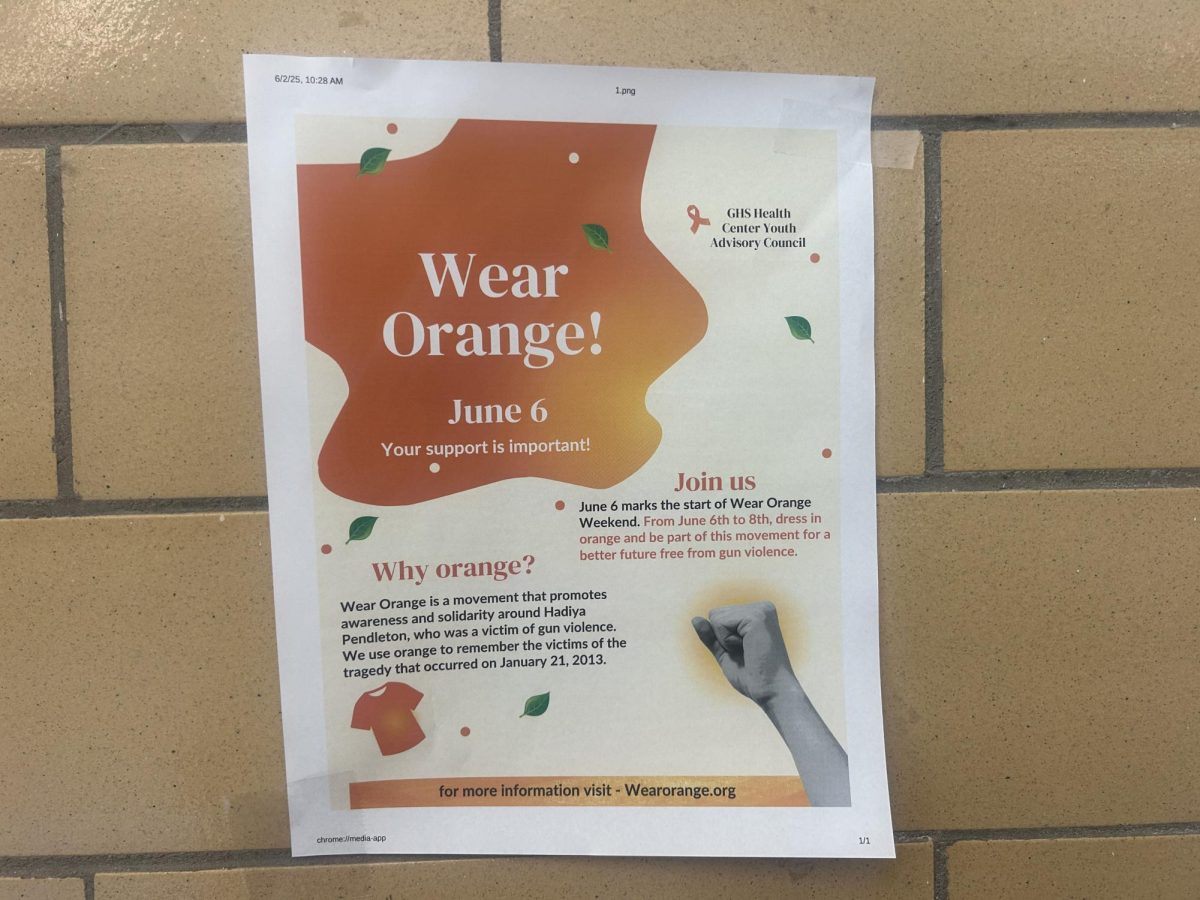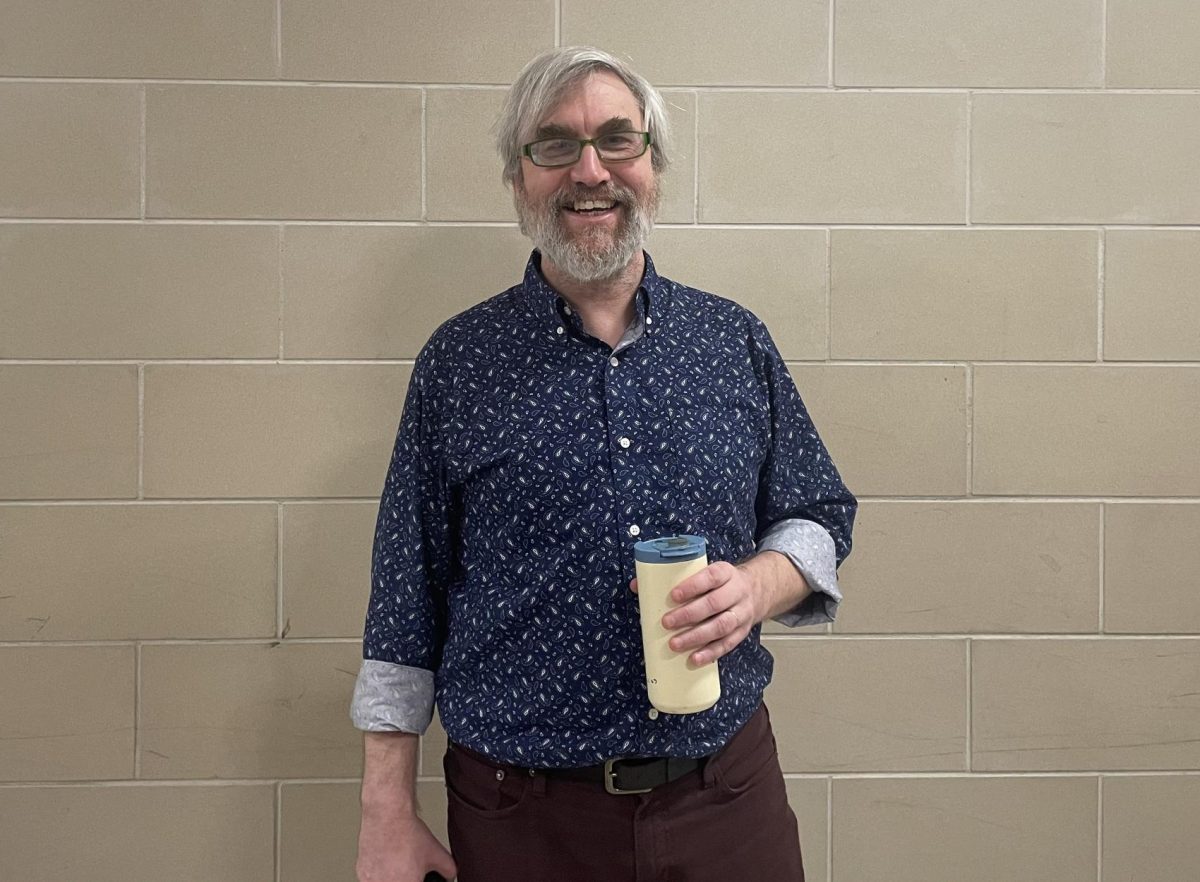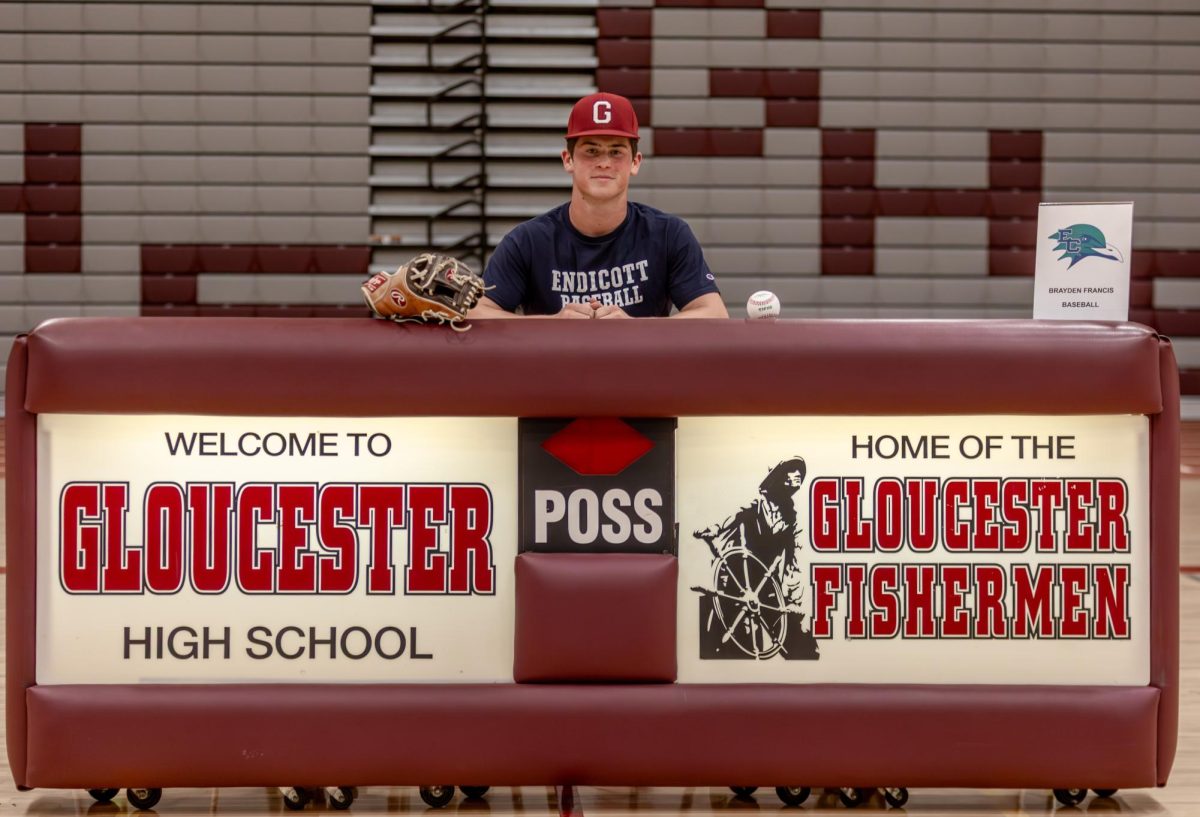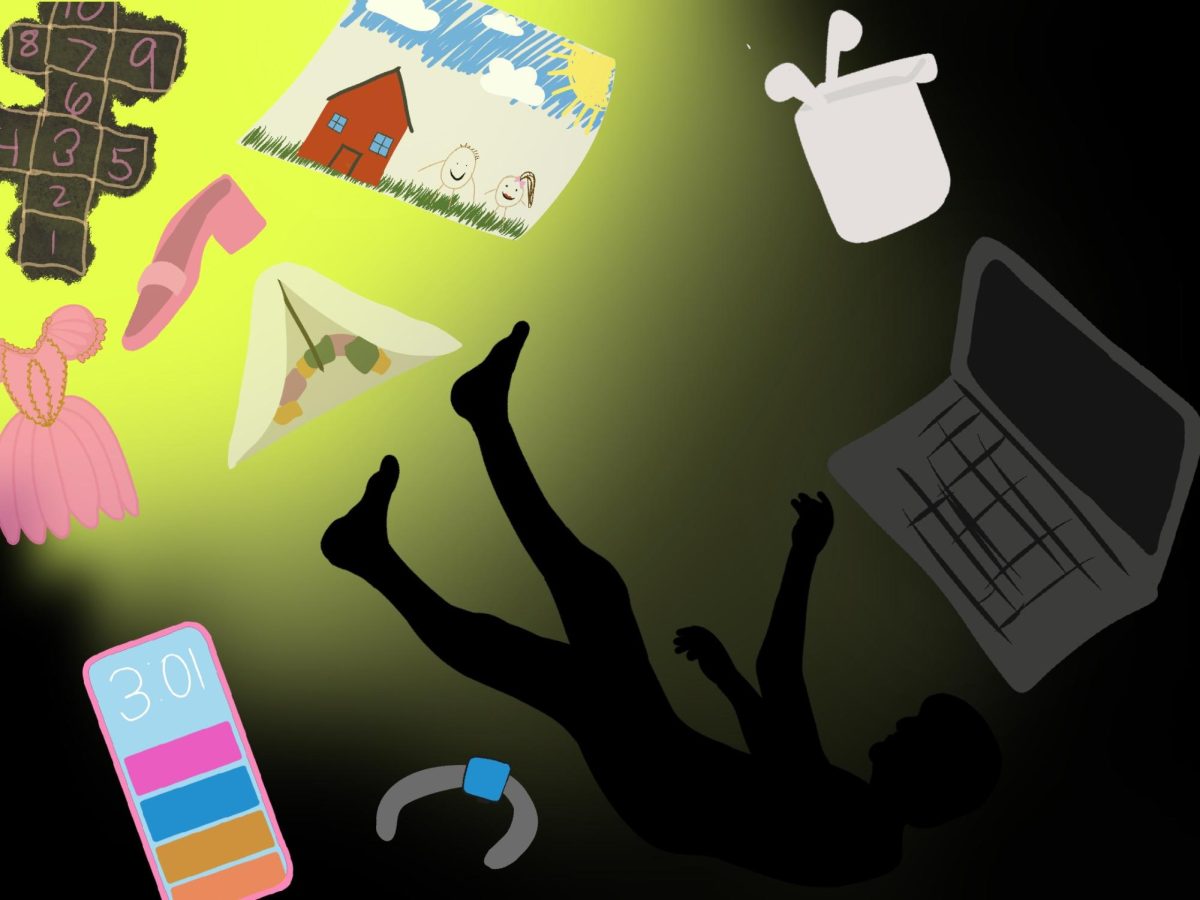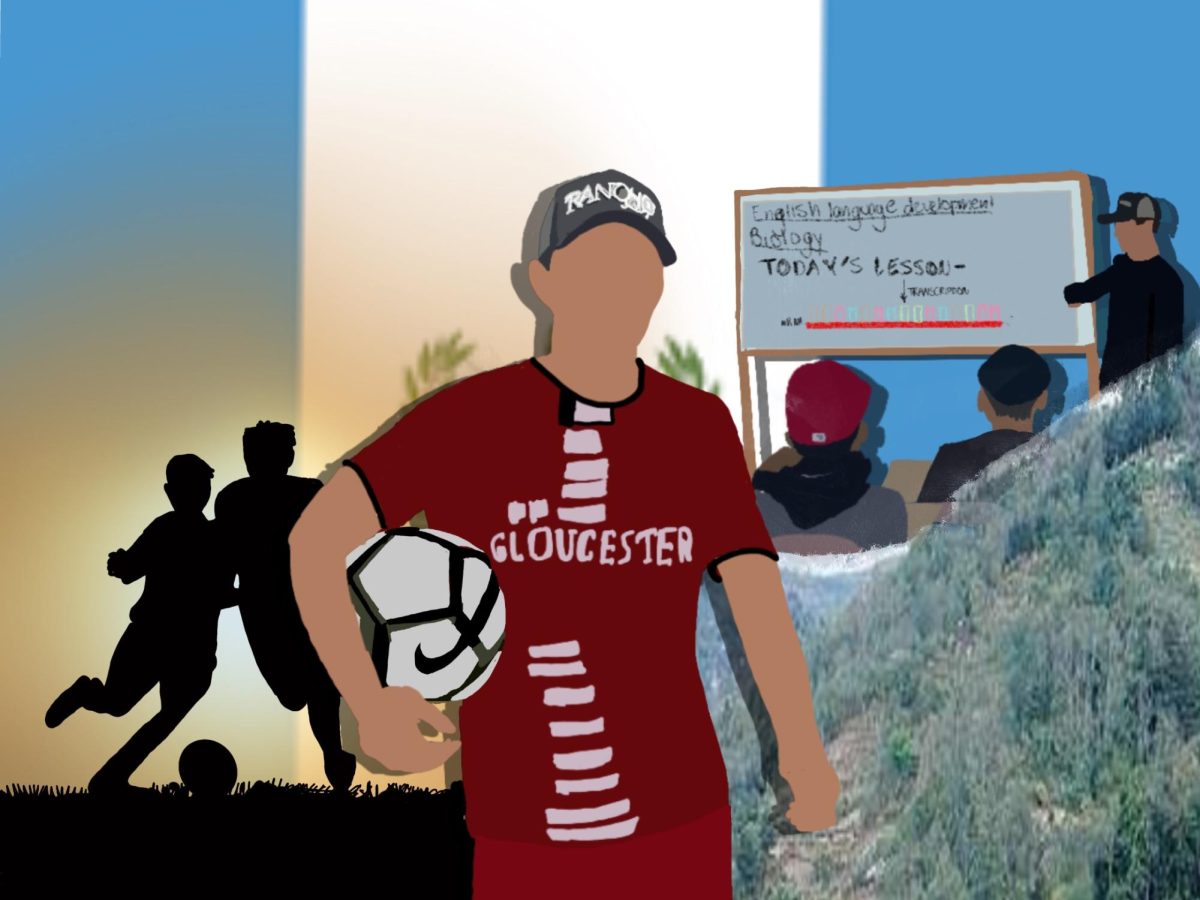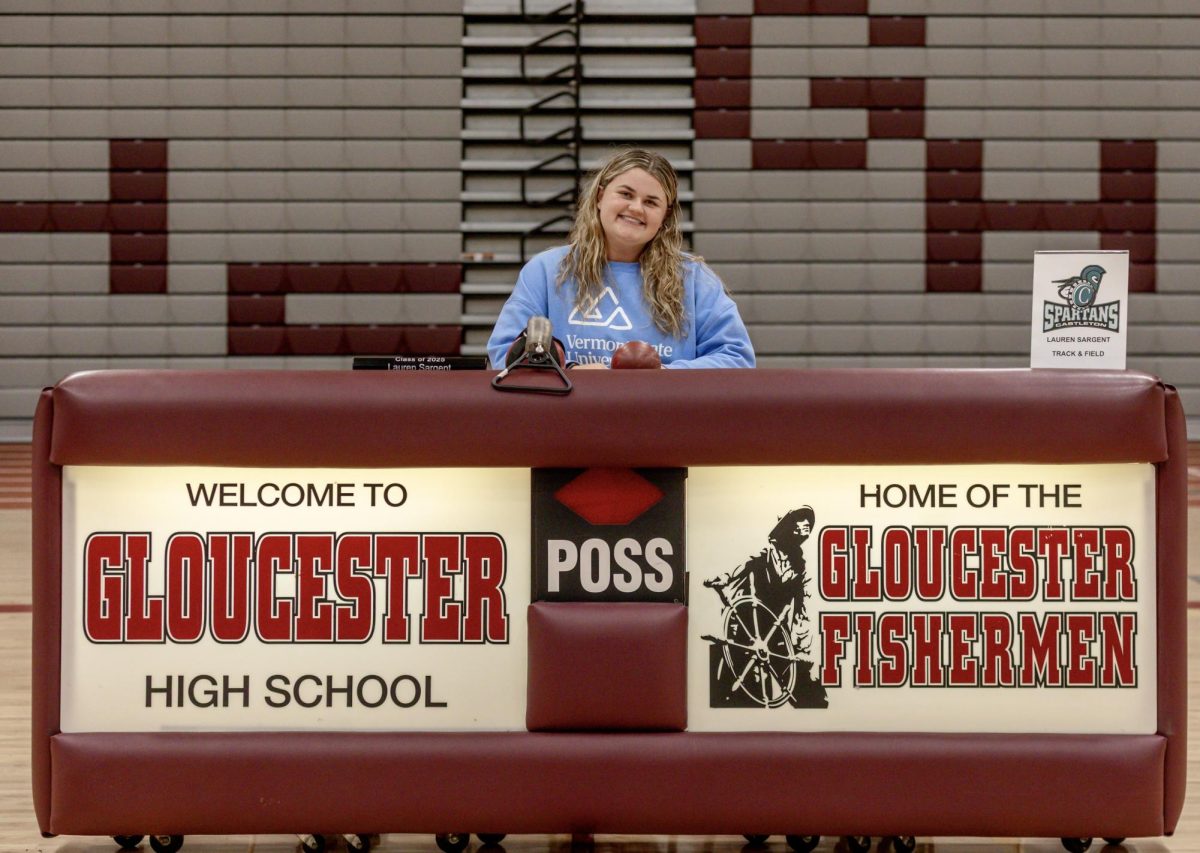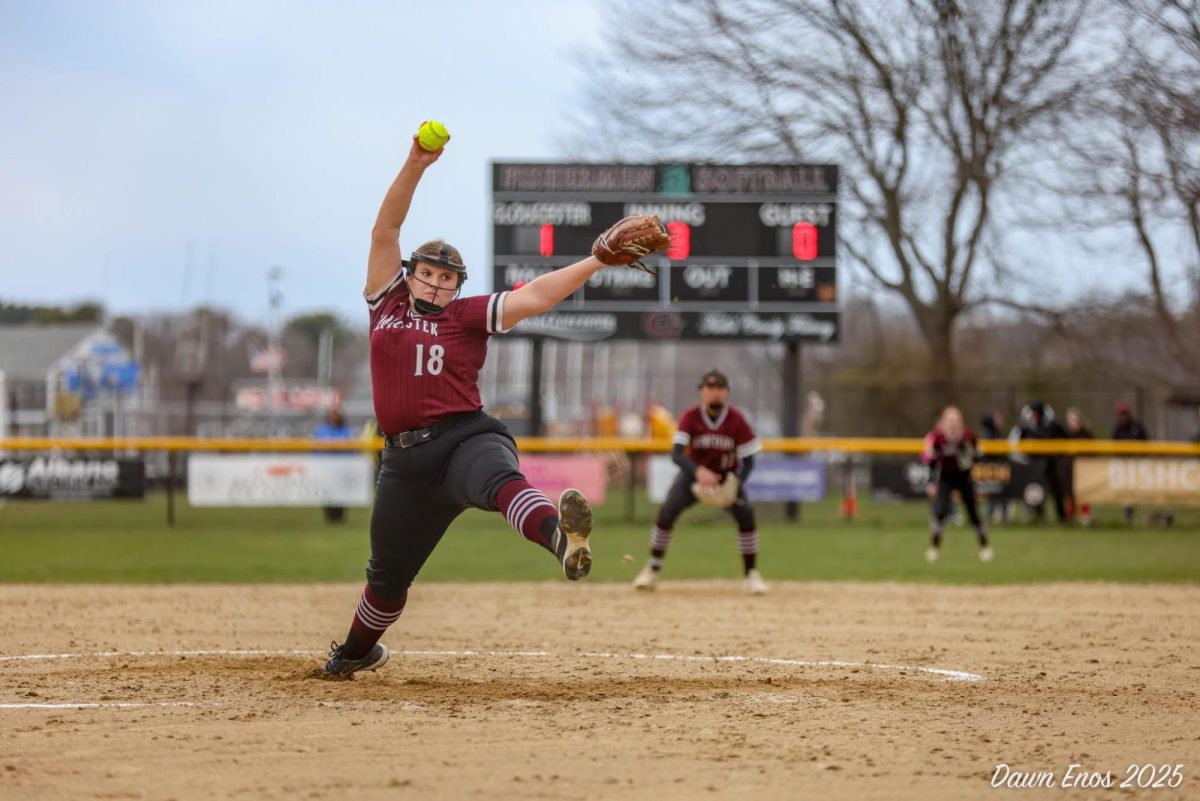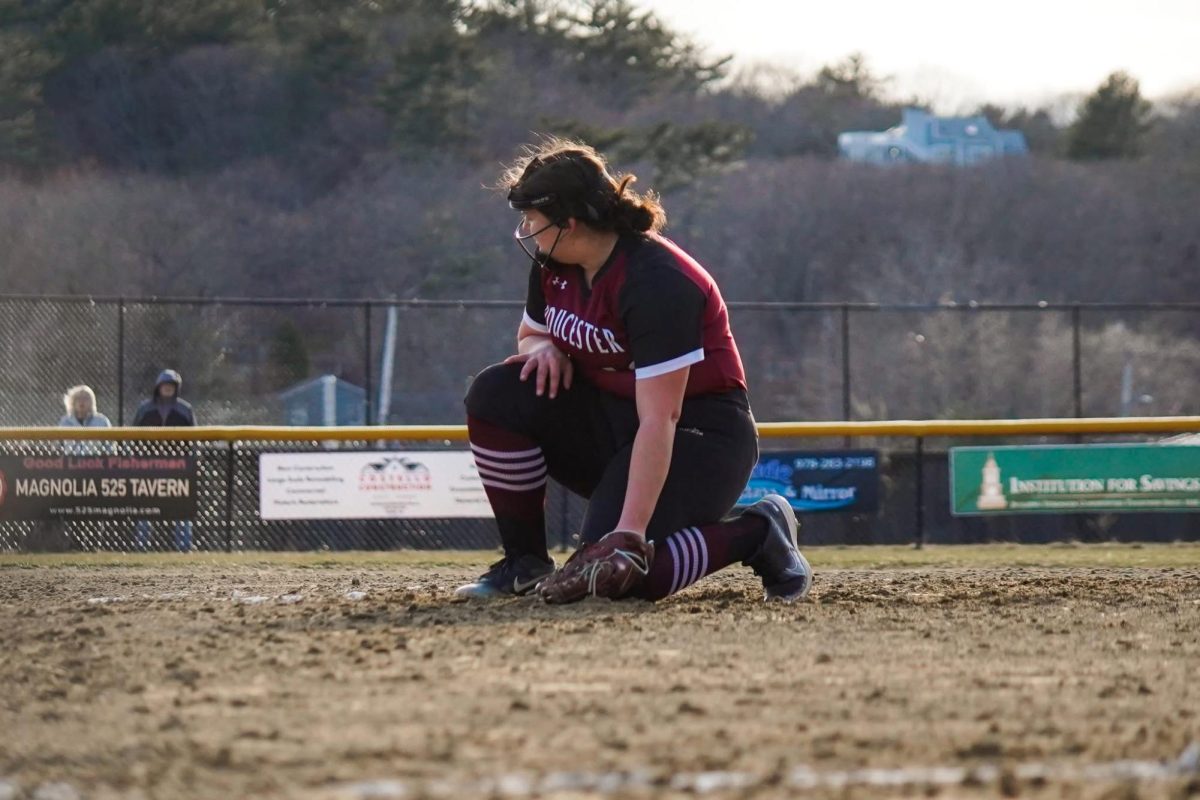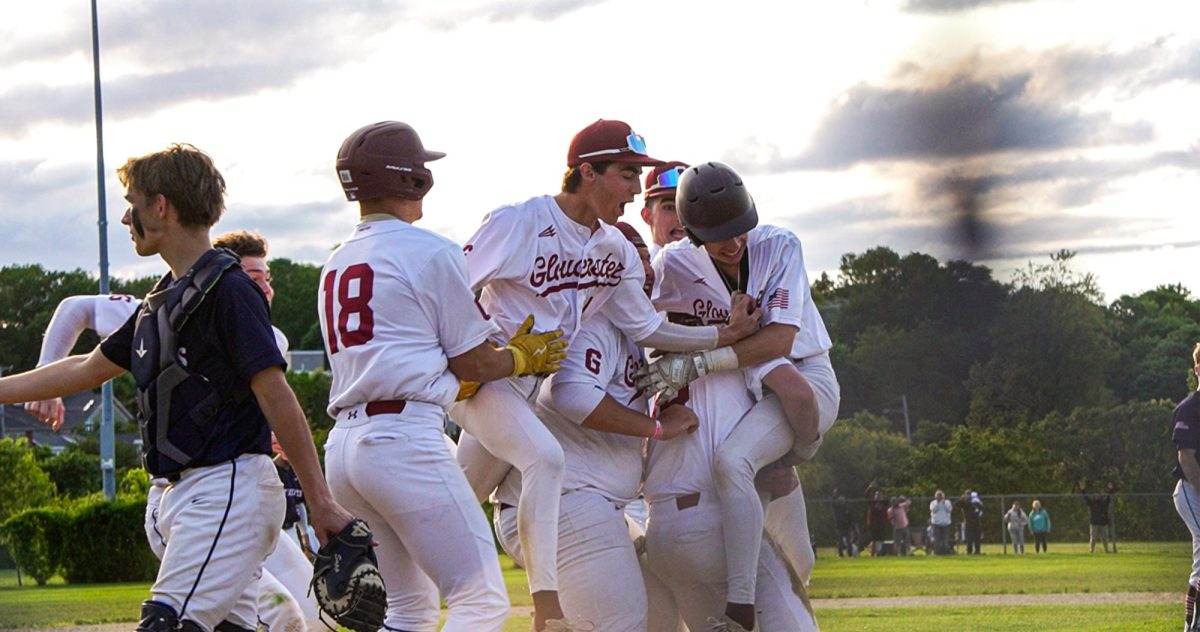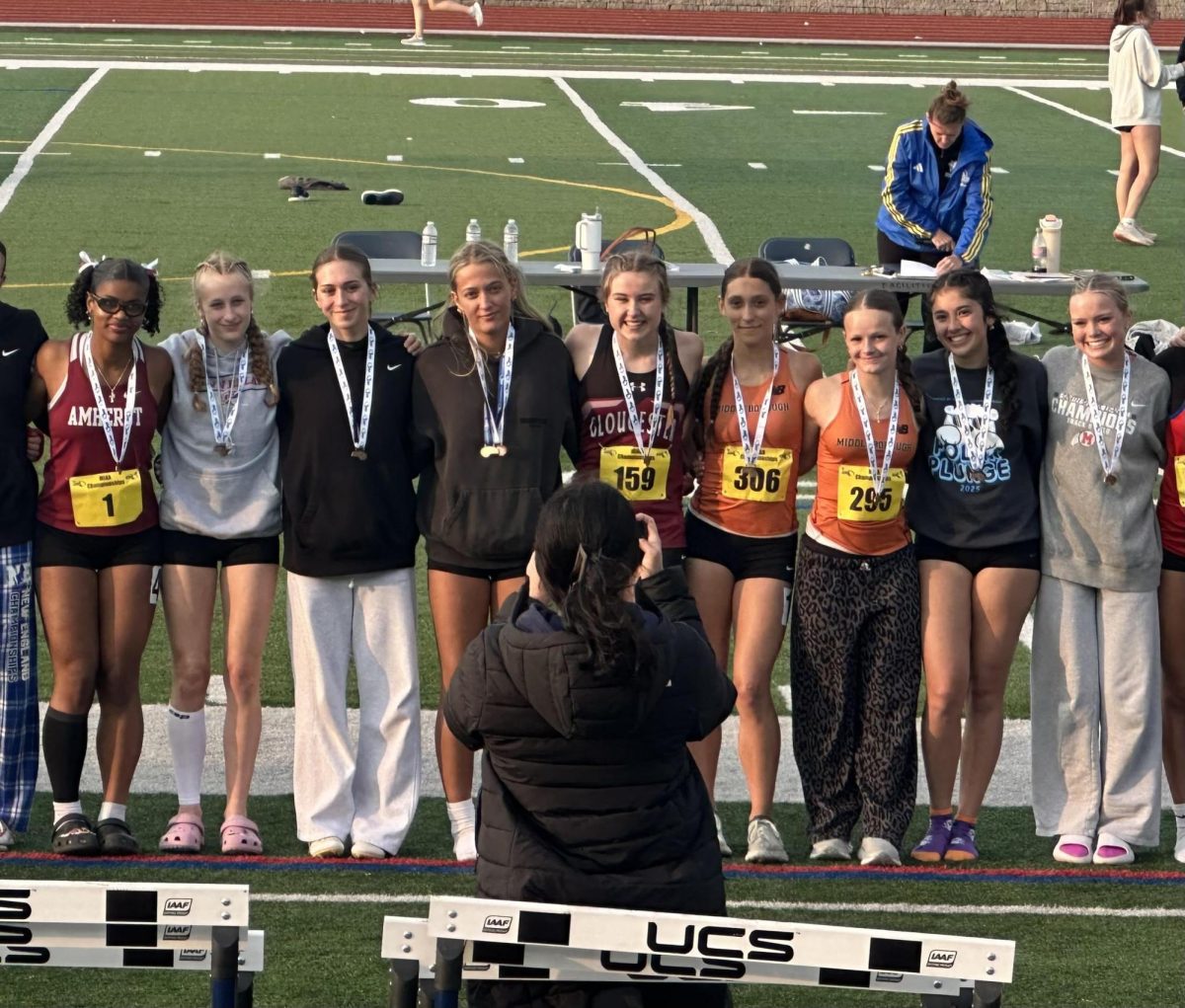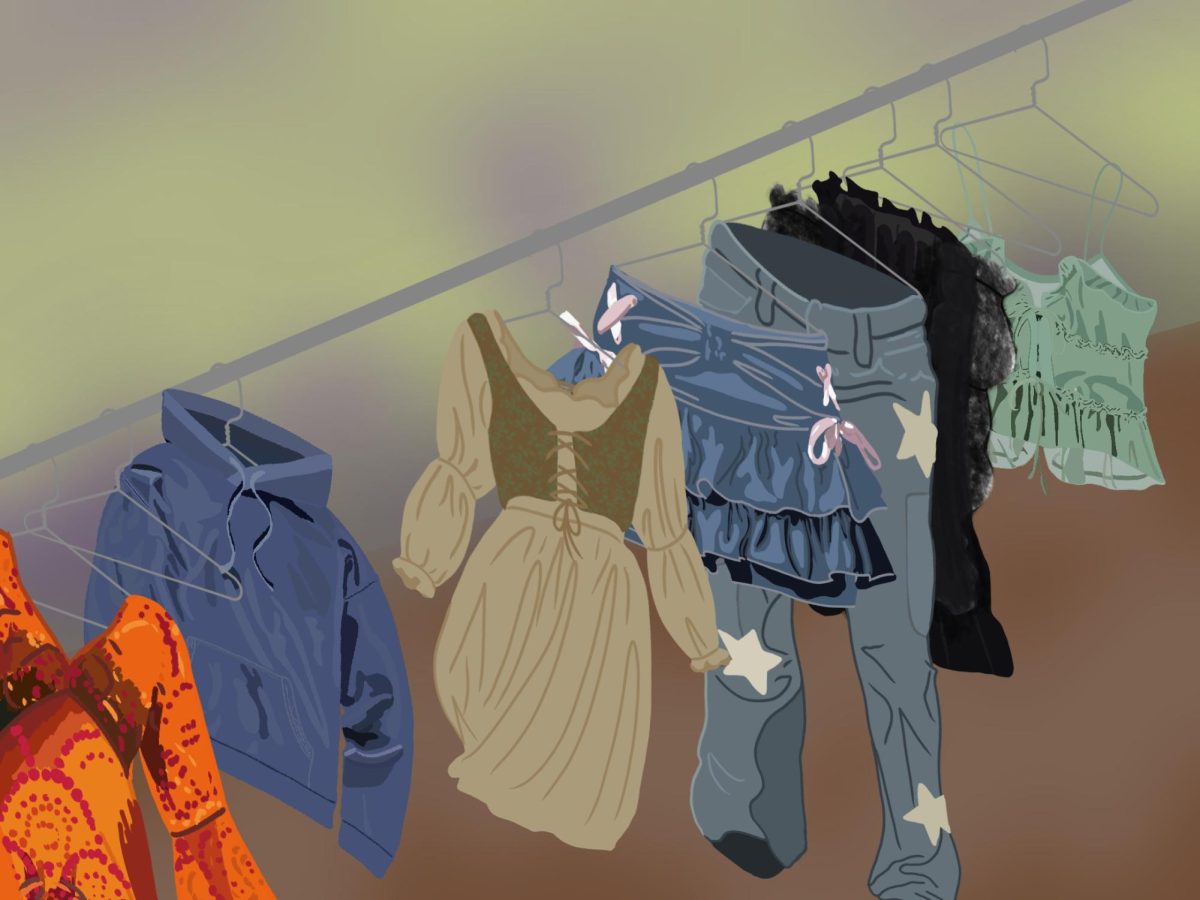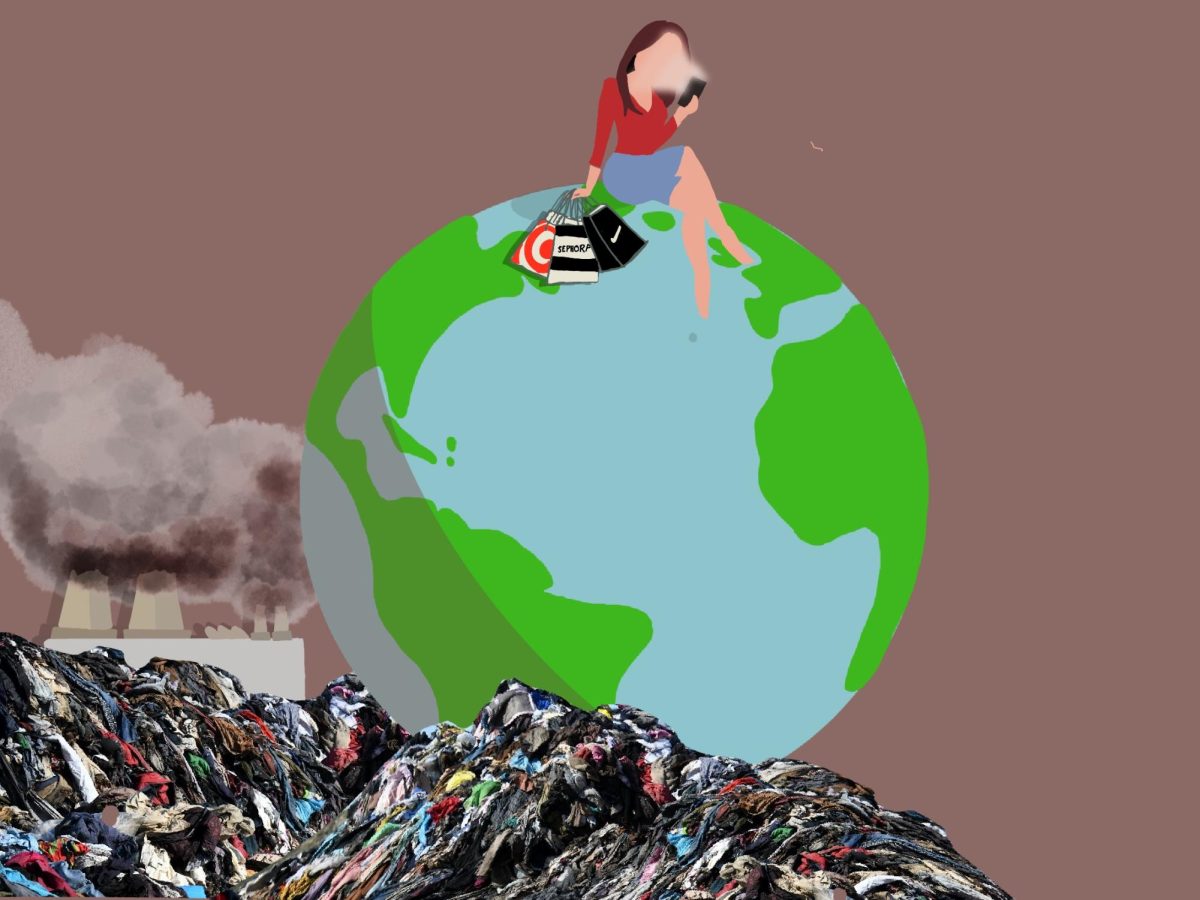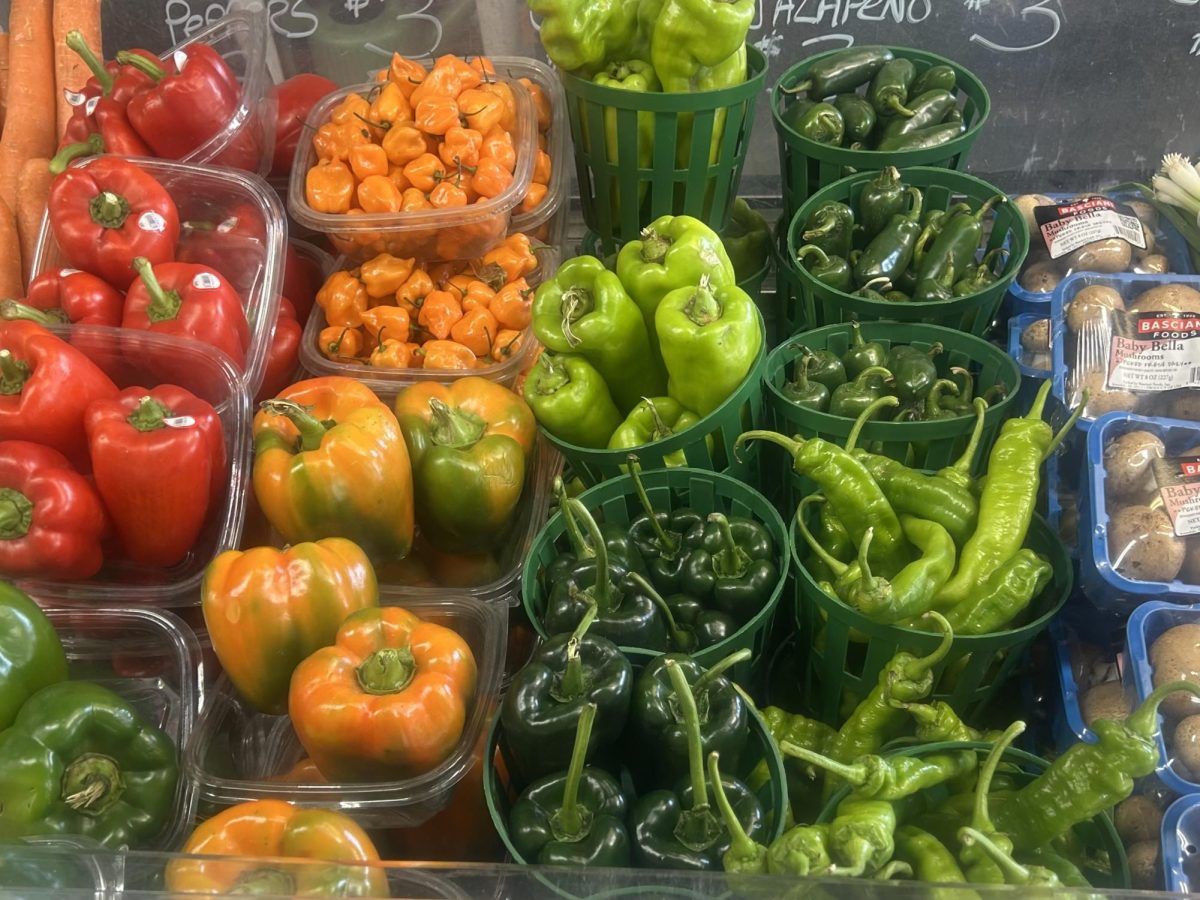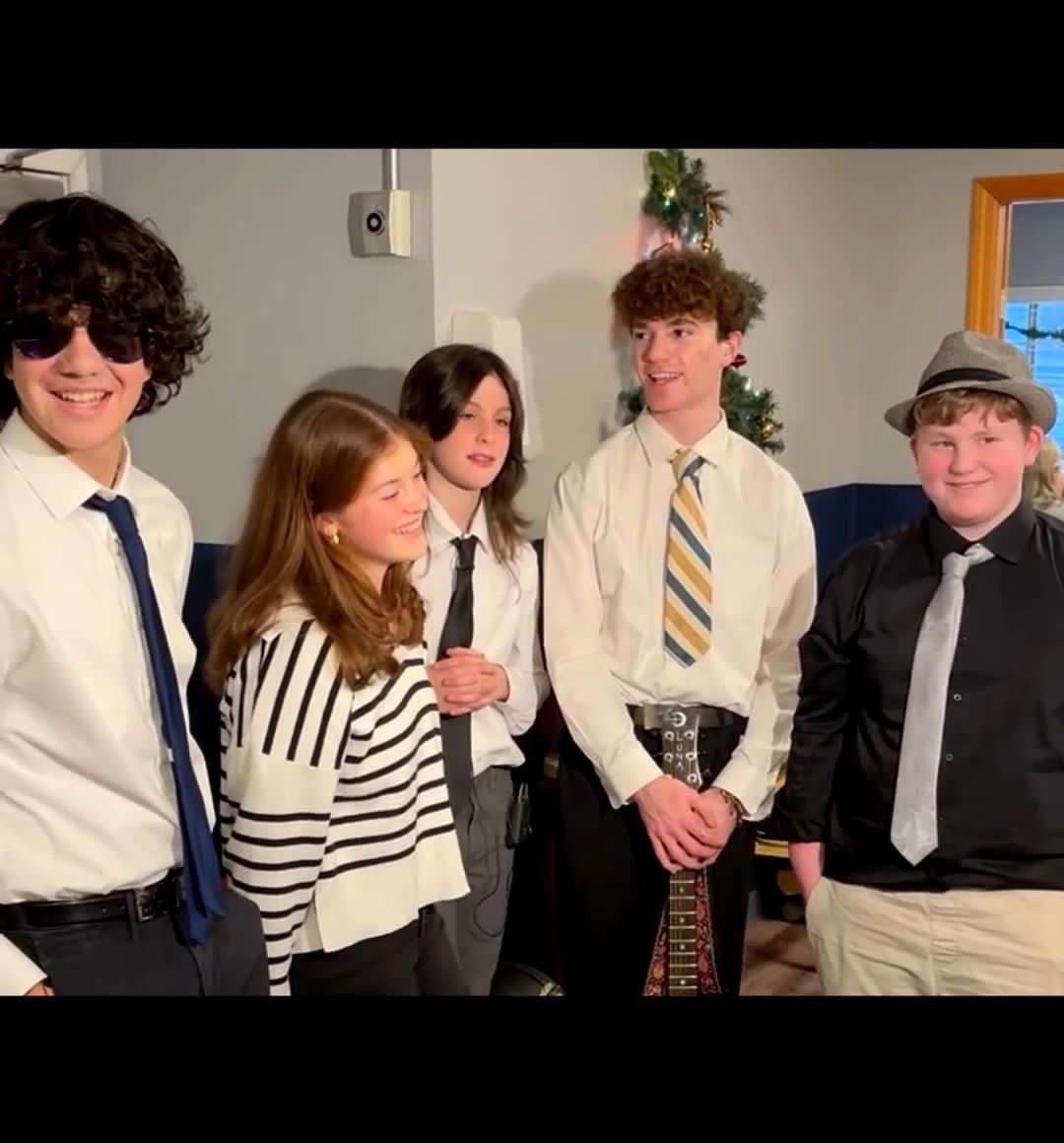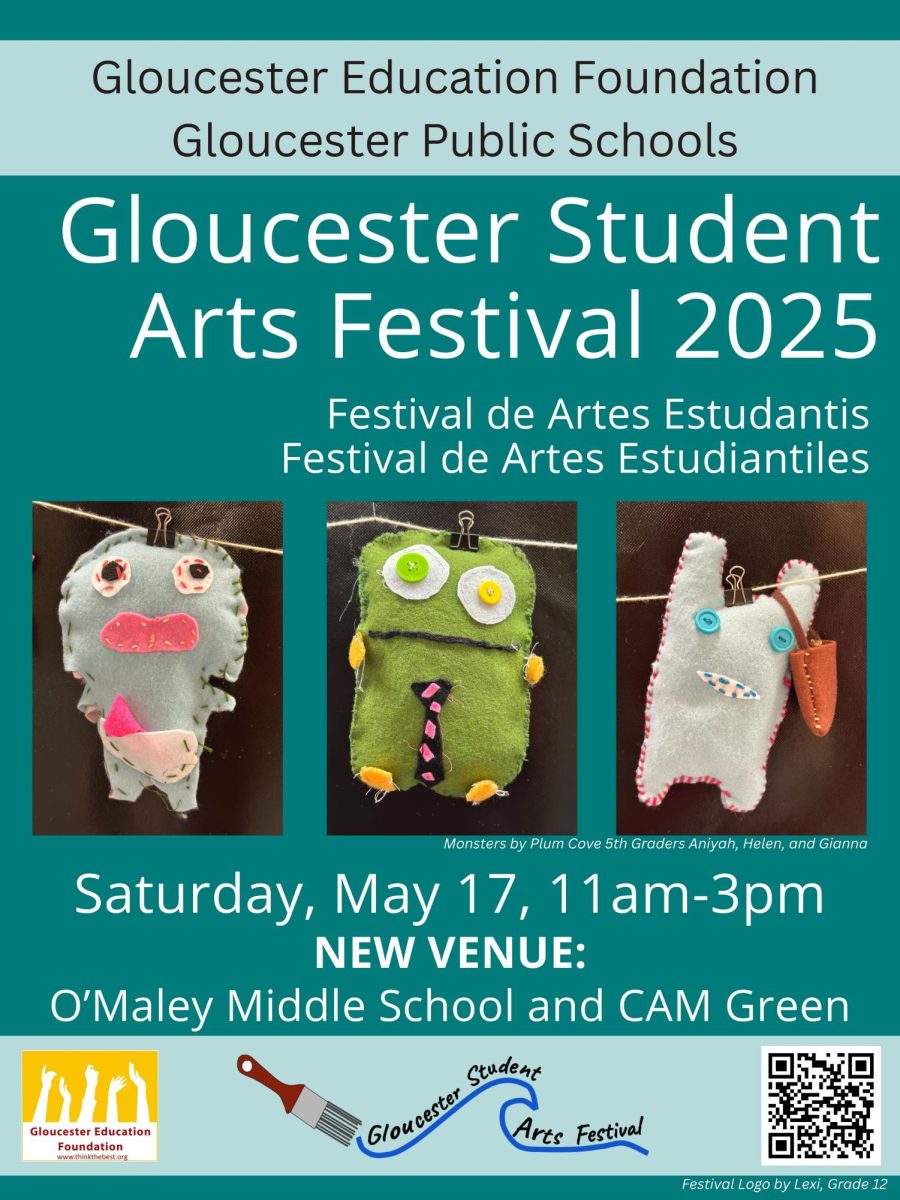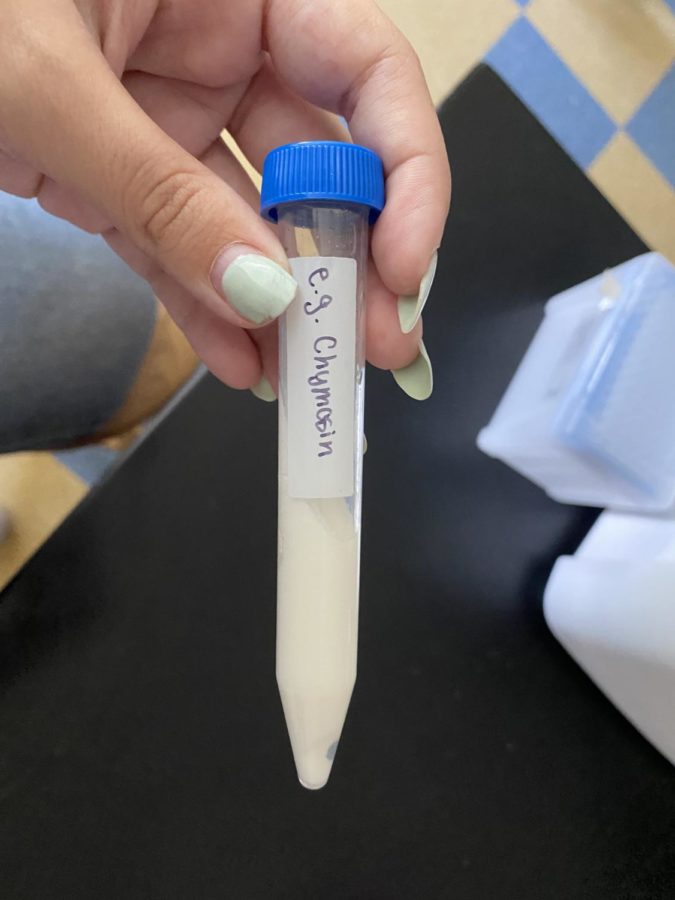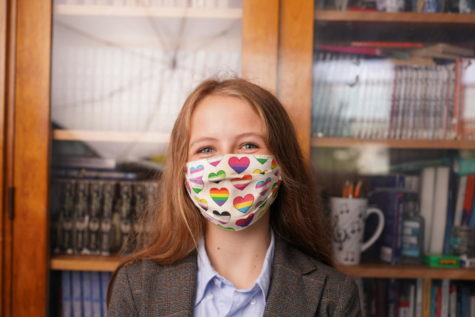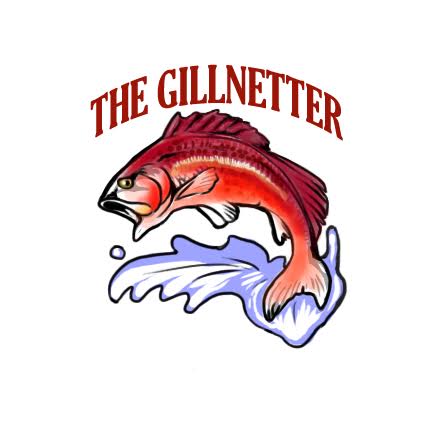Biotech class gets daring with dairy
A combination of milk mixed with chymosin enzyme used to make cheese.
October 18, 2022
Recently, the GHS Biotech class made cheese. This interesting lab taught much more than just the process of making a dairy snack, however. Students reported learning about the versatility, uses, importance, and tools relevant to many other biotech concepts and projects.
“When I took the class, I didn’t know that it could be used for environmental science, or medical science,” GHS senior Ella Grossi said. “It has a lot of uses.” Biotech itself is the intersection between biology and technology. It allows people to use technology to advance biological studies and vice versa.
“Biotech is very important for finding alternative methods for production and efficiency,” GHS senior Haven Gullet said.
Making cheese is a great experiment because of the quick reaction time and tools used. Reaction time was reported to be only 1-2 minutes, and this allowed students to see results in a very short amount of time. The process also used some important utensils as well, including micro pipettes, an instrument used to measure in very small amounts.
This experiment helped introduce a member of the biotech society, “the Cheese Nun”, otherwise known as “Mother Noella Marcellino.” Marcellino is an American nun well known for her cheese making process, and the science behind it used to prove her methods. Learning about her in a GHS biotech class may seem silly, but learning about important figures in the field can provide insight into the mindset of researchers of all types.
Despite enjoyment for the experiment being high overall, students agreed with Maddison Carroll when she said, “the worst part was when it solidified.” However, interest in the experiment was overall very high.
Students explained the way enzymes from a baby cow’s stomach were traditionally used for cheese, but through biotechnology new, efficient, ethical, and interesting methods are becoming more mainstream as well. Students were able to see first hand the different results caused by different agents, using mainly chymosin, bovine rennin, and vegetable rennin.
Bovine rennin comes from cows, but through biotech scientists have been able to take the enzyme from cows and give it to mushrooms, creating chymosin. Vegetable rennin, made primarily of artichokes, thistles and nettles, was also effective for curdling the milk. “Chymosin worked faster, it was just more efficient,” Biotech teacher Eric Leigh said.
The biotech class at GHS comes highly recommended if you are interested in a half year course to further your experience with science and technology. Students in the class described it as “hands on” and an advantage for those pursuing science careers. Students have all types of experience with biotechnology coming into the class, so there is no pressure to be an expert, and the fundamentals learned will be beneficial to many different career paths.

